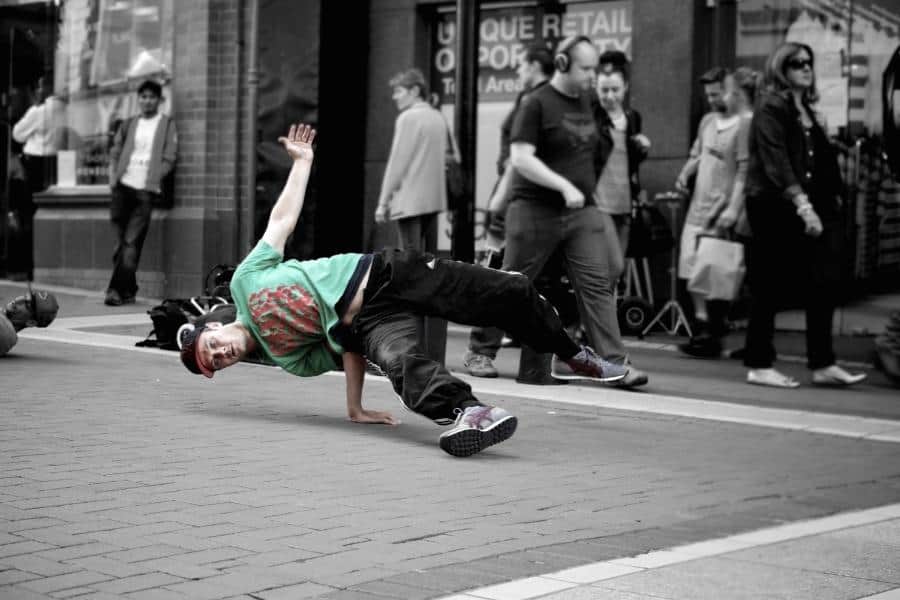So you want to be a dancer? Congrats! You have a good taste in music and a talent for moving your body gracefully. Now all you need is some talent and a big dream to make it in the industry. Unfortunately, being a dancer is not as easy as it seems. You will need to determine how much you will make per hour in order to know how much you need to budget for (and you can’t budget for dancing, it’s an essential part of being a dancer). Let’s find out how much a dancer makes, shall we?
A dancer’s salary depends on many factors, including their experience, the type of dancing they do, and the location of their work, but what is the salary of a dancer? For example, a ballet dancer at a small regional theater may make as little as $300 per week, while a Broadway dancer can make up to $2,000 per week.
Dancers typically start out working in small dance companies or as part of dance troupes. As they gain experience, they may move on to working in larger companies or on Broadway. The most experienced and successful dancers can make a very good living, with some earning over $100,000 per year. So, how much does a dancer make? It depends, but with hard work and dedication, a dancer can earn a very good salary.
Top Dancer Salaries
If you’re looking to become a dancer, you’ll need to decide how much you’re willing to sacrifice for your passion. While some people may choose to go the route of being a struggling artist and making their art their full-time job, you can be sure that dancers make a lot of money. Take a look at the top dancer salaries from the most recent years of data available:
- $25,000-$30,000 per year – Beginner Dancer
- $30,000-$35,000 per year – Intermediate Dancer
- $35,000-$40,000 per year – Professional Dancer
- $40,000-$45,000 per year – Superior Dancer
- $45,000-$50,000 per year – Exemplary Dancer
- $50,000-$60,000 per year – Great Dancer
The Biggest Dancer Cities
Where do the most professional dancers live? The top 10 biggest cities for dancers can be found below. From New York City to Los Angeles, these are the places to be if you’re a dancer looking for a career in entertainment.
- New York City, NY – 280 dancers
- Los Angeles, CA – 252 dancers
- Chicago, IL – 211 dancers
- Houston, TX – 199 dancers
- Philadelphia, PA – 196 dancers
- San Francisco, CA – 176 dancers
- San Diego, CA – 168 dancers
- Portland, OR – 157 dancers
- Toronto, ON – 148 dancers
- Washington, DC – 126 dancers
While these numbers may seem high, they probably aren’t. Remember, these are just the cities with the most professional dancers, so they’re probably just as busy as other places. Still, when you consider there are over 400 million people living in the U.S. alone, it’s no wonder why the majority of dancers choose to live and work in major cities.
The Future of Dance
If you’ve been paying attention to the news recently, you’ll know that dance is experiencing a huge resurgence. From viral dances like the ‘dance meme’ to Netflix’s ‘Black Mirror’ taking ballet as a serious depiction of life in the 2020s, it seems that society is finally starting to appreciate the art form.
This newfound interest in dance is being reflected in the professional world as well. The demand for dancers is on the rise, as companies from all over the world are searching for the next big thing. The 2020s are predicted to be the ‘golden era’ of dance. Why? Well, simply put, there are so many options for people who want to become professional dancers. Plus, with everyone from TikTok to YouTube creators giving popular trends like group dances and ballroom dancing a spin, it’s clear that the future of dance is looking great.

If you’re passionate about dance and want to make a living doing what you love, consider taking a look at the top 40 cities for dancers. You’ll find lots of opportunities, as there are currently over 400 million people living in the U.S. alone. Don’t forget: you may not need to live in a big city to make it in the entertainment industry. There are lots of opportunities in smaller towns and rural areas too if you do decide to take this route.
The Basics
Usually, when someone decides to become a dancer, the first question they ask is – how much do dancers get paid? As expected, this is a somewhat loaded question. It would be better to ask, “How much does a dancer make compared to what?” For example, if you want to be a professional dancer, you need to know how much your peers in the industry make. There are a few things you should know about this before diving in.
- First of all, not all dancers make the same. There are higher-paid positions and there are lower-paid positions. This means you will need to do more research to find out what job you will end up doing.
- Second, you need to decide whether you will be performing in musicals or doing jazz or traditional ballet. This will also determine which union you will belong to (more on this later).
- Lastly, you need to decide how much you are willing to sacrifice in order to succeed as an artist. Are you willing to go on tour? Do you have enough talent to make it in the first place? These are all questions you need to ask yourself before making any rash decisions. More on this later.
How Much do Backup Dancers make?
Have you ever wondered how much money backup dancers make? It turns out that they can make a pretty penny!
According to Glassdoor, a backup dancer’s salary is $39,959 per year. However, pay can vary widely depending on the level of experience, the type of gig, and the location. For example, backup dancers who work on major tours or music videos can make significantly more than those who work at smaller venues.

So, how do backup dancers make their money? The majority of their income comes from performance fees. These fees are typically calculated based on the length of the gig and the number of dancers involved. For example, a backup dancer who works on a two-minute music video might make $200-$300 per day, while a backup dancer who works on a two-hour concert might make $1,000-$1,500 per night.
Backup dancers also make money from rehearsals. Rehearsal fees are typically lower than performance fees, but they can still add up if a dancer is working on multiple projects at once.
Finally, backup dancers may also earn royalties from the sale of tickets, merchandise, or recordings. These royalties are typically a small percentage of the total sales, but they can still add up over time.
So, there you have it! Now you know how much backup dancers make.
How Much Do Choreographers Get Paid?
Choreographers are paid for their work in a variety of ways. Some are paid by the hour, some are paid per project, and some are paid a salary. The average hourly rate for a choreographer is $30, although rates can vary depending on the type of work, the location, and the choreographer’s experience. Project-based payments can range from a few hundred dollars to several thousand, depending on the scope of the project. Salaried choreographers typically earn $40,000-$50,000 per year.
The Economics Of Dancing
Being a dancer is not as glamorous as it seems. Behind the scenes, there are a lot of people making a living as dancers. In fact, there are so many dancers that there is a whole category in the financial section of the tax forms called Dancers (code number is 82-0031). This is due to the fact that there are a lot of taxes that you have to pay as an artist, no matter what type of work you do.
To keep things simple, we will assume that you will be a how much does a professional dancer make and perform in musicals. So let’s take a look at the economics of dancing. First, you will need to decide how many hours you will work per week. This will determine how much you make per hour. To be able to make this decision, you will need to multiply your hours by your wage rate.

Your wage rate is what you will earn from your job per hour. It is typically expressed as a percent or as a fixed dollar amount. For example, if you have an hourly wage of $25 and you work 40 hours per week, your salary will be $1000 per week. Remember, the more you work, the more you will make. This is a common mistake that people make who are just starting out.
Working hard will indeed bring financial success, but only if you know how to invest it wisely. One important thing to keep in mind is that dancers typically get paid per performance, not per hour. Unless you are on tour, you will not get paid per hour. This makes it more difficult to budget for since you will not see the monetary value of your work until you get paid at the end of the month.
The Union
There are three main unions you will need to join if you decide to become a professional dancer. These unions are The American Federation of Television and Radio Artists (AFTRA), The International Alliance of Theatrical Stage Employees (IATSE) and The Motion Picture Machine Operators (MPMO).
You will have to decide which union you will join based on your preferred job opportunities and based on where you live. Typically, you will have to join AFTRA if you live in New York City and you want to perform in musicals. However, if you are planning on working in more traditional styles, such as ballet or jazz, you will need to join IATSE. If you are in Los Angeles, you will need to join the rival union, MPMO.
Fortunately, there is an option you can use to join both unions. This is called the “preferable” candidate. Simply put, if you qualify under this category, you will be able to work in most places without having to decide which union to join. Typically, this option is only given to people who have already worked for several years in the industry as a background dancer.
This is called “secondary” or “performers’” membership. If you are not sure which union to join, ask your local labor union for help or visit their website to find out more details. There is a wealth of information online and even if you join the wrong union, you can always leave it without losing your job.
This may not be the case if you choose to be a contractor (independent contractor), as they typically do not allow you to leave unless you have another job lined up. So, in a nutshell, do not choose this route unless you are certain that is what you want to do.
The Industry
Dancing is a highly competitive industry. In fact, there are entire websites and forums designed for dancers to connect with other dancers and with people who work in the industry. If you are just starting out, it is important to remember that the competition for jobs is fierce.
This industry is always looking for new dancers to join them and bring in fresh talent. In addition to that, many dancers get their first break in the industry by performing in musicals. This is because many theaters will give you a free pass to perform in musicals if you can get a lead in a musical. If you are able to get this lead, many theaters will want to hire you as a permanent actor or performer.
Another important point to make is that if you are a female dancer, you will need to make sure that you are representing yourself adequately. Do not expect companies to “find you” a spot in an industry that still discriminates against women. You need to take this into consideration and make sure that you are getting all the rights and privileges that you deserve. The more you know, the better. More on this later too.
FAQ

Do dancers make good money?
Dancers can make good money, but it depends on their popularity and location. Most dancers make minimum wage, but some make much more. Dancers in big cities and those with a lot of followers can make a lot of money.
What is the highest-paying job in dance?
The highest-paying job in dance is that of professional dancer salaries. While there are many different types of dancers, those who are able to command the highest salaries are typically those who perform with world-renowned companies or who have been able to build successful careers as independent dancers.
Is a dance career worth it?
There is no one-size-fits-all answer to this question, as the value of a dance career depends on each individual’s goals and priorities. However, many dancers find that their career is extremely rewarding, providing them with a unique form of expression, a deep sense of satisfaction, and a strong sense of community.
Also read:
Summary
Before we wrap this up, let’s take a moment to put this in perspective. As a dancer, you will need to determine how much you make per hour. This will depend on a few factors, but mainly on how many hours you work and your wage rate.
Once you know how much you make per hour, you can determine how much you need to earn per week. To be able to do this, you will need to multiply your earnings by 4. You then take this amount and divide it by the number of days in the week in order to determine how much you need to save for bills.
Finally, how much do dancers make on tour. Remember, money is not everything, and you need to look at the whole picture. Only you know what is best for you and your family. However, if you are struggling with finances, it is always best to come back to a known source for assistance. Believe it or not, there are a lot of people out there who can help. The internet is vast and there are many helpful people who can give you advice. Do not be afraid to ask for help. It is always better to be safe than sorry.

